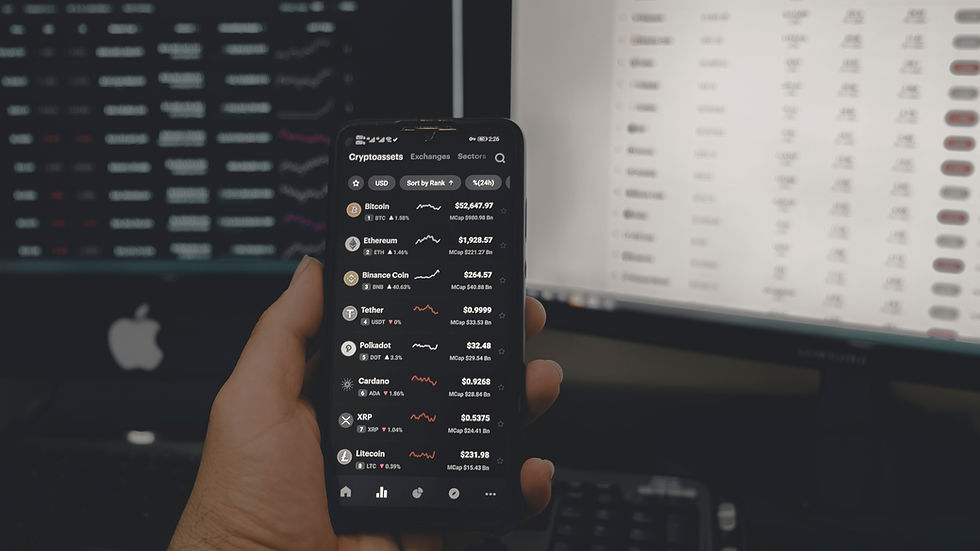Forex Trading for Beginners: A Complete Guide to Getting Started
- Money Dox

- Aug 6, 2025
- 4 min read

1. Introduction to Forex Trading
What is Forex Trading?
Forex trading, or foreign exchange trading, is the process of buying and selling currencies in the global market. The goal is to profit from the fluctuations in exchange rates between different currency pairs.
How Does the Forex Market Work?
Unlike stock markets, the forex market operates 24 hours a day, five days a week. It is decentralized, meaning that trading takes place over-the-counter (OTC) through a network of banks, brokers, and financial institutions.
Why is Forex Trading Popular Among Beginners?
Forex trading is accessible, requires relatively low capital to start, and offers high liquidity. The ability to trade with leverage also attracts many beginners.
2. Understanding the Basics of Forex
Currency Pairs: Major, Minor, and Exotic Pairs
Forex trading involves trading currency pairs, which are categorized as:
Major pairs: USD/EUR, USD/JPY, GBP/USD
Minor pairs: EUR/GBP, AUD/CAD, NZD/JPY
Exotic pairs: USD/TRY, EUR/ZAR, GBP/MXN
How Forex Trading Differs from Stock Trading
Forex trading involves currency pairs, operates 24/5, and offers higher leverage than stock trading. Stocks represent ownership in companies, while forex deals with currency exchange.
Key Players in the Forex Market
Retail Traders: Individual traders using online platforms
Banks: Central and commercial banks influencing currency value
Institutions: Hedge funds, governments, and multinational corporations
3. Essential Forex Trading Terminology
Pips, Lots, and Leverage Explained
Pip: The smallest price movement in a currency pair
Lot: Standard trading volume unit (micro, mini, or standard lots)
Leverage: Borrowed funds to increase trade size
Bid, Ask, and Spread: What Do They Mean?
Bid price: Price at which a trader can sell a currency
Ask price: Price at which a trader can buy a currency
Spread: Difference between bid and ask price
Understanding Margin and Margin Calls
Margin is the required capital to open a leveraged position. A margin call occurs when a trader lacks sufficient funds to maintain a position.
4. How to Get Started with Forex Trading
Choosing the Right Forex Broker
Look for brokers with:
Regulation and licensing
Competitive spreads
Reliable trading platforms
Setting Up a Trading Account: Step-by-Step Guide
Choose a regulated broker
Register and verify identity
Fund your account
Download a trading platform
Start trading with a demo account
Demo vs. Live Trading: When to Transition
Demo trading helps beginners practice risk-free. Transition to live trading once consistent profitability is achieved.
5. Analyzing the Forex Market: Fundamental Analysis
Economic Indicators That Influence Currency Prices
GDP growth
Unemployment rate
Consumer confidence index
Interest Rates, Inflation, and GDP: Key Factors to Watch
Higher interest rates attract investors, increasing demand for a currency.
The Impact of News and Geopolitics on Forex
Political stability, economic policies, and global events impact currency fluctuations.
6. Technical Analysis in Forex Trading
Reading Forex Charts: Line, Bar, and Candlestick Charts
Candlestick charts provide the most comprehensive analysis for traders.
Popular Technical Indicators
RSI: Identifies overbought or oversold conditions
MACD: Determines trend strength
Moving Averages: Identifies trend direction
Understanding Support and Resistance Levels
Support and resistance levels indicate potential price reversal points.
7. Developing a Forex Trading Strategy
Scalping vs. Day Trading vs. Swing Trading
Each strategy varies in trade duration and risk tolerance.
Risk Management Strategies for Beginners
Always set stop-loss and take-profit levels to manage risk.
Backtesting and Optimizing Your Trading Strategy
Test strategies using historical data to ensure profitability.
8. Risk Management and Capital Protection
Setting Stop-Loss and Take-Profit Orders
The Importance of Position Sizing
How to Avoid Overleveraging and Overtrading
9. Psychology of Forex Trading
Managing Emotions: Fear, Greed, and Discipline
How to Handle Wins and Losses Effectively
The Role of Patience and Consistency in Trading
10. Choosing the Right Forex Trading Platform
MetaTrader 4 vs. MetaTrader 5 vs. cTrader
Mobile Trading vs. Desktop Trading
Essential Features to Look for in a Trading Platform
11. Forex Trading Sessions and Market Hours
Understanding the Four Major Forex Sessions
Best Times to Trade for Maximum Profitability
How Market Overlaps Affect Volatility
12. Common Mistakes Beginners Make in Forex Trading
Trading Without a Plan
Chasing Losses and Emotional Trading
Ignoring Risk Management Principles
Conclusion
Forex trading offers an exciting opportunity for beginners, but it requires patience, discipline, and continuous learning. By understanding the basics, developing a solid strategy, and managing risks, new traders can increase their chances of success.
FAQs
1. How much money do I need to start Forex trading? Many brokers allow you to start with as little as $10, but $500-$1,000 is recommended for better risk management.
2. Can I trade Forex part-time while working a full-time job? Yes, swing trading or using pending orders allows part-time trading.
3. What is the best Forex trading strategy for beginners? Simple trend-following strategies using moving averages work well for beginners.
4. How do I know if a Forex broker is trustworthy? Check for regulatory licenses from authorities like the FCA, CySEC, or NFA.
5. What are the biggest risks in Forex trading? Overleveraging, lack of risk management, and emotional trading are the biggest risks.



Comments